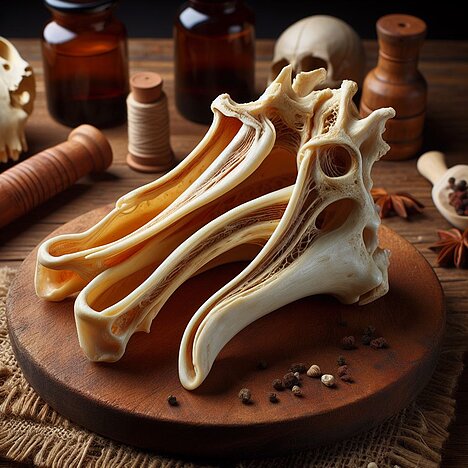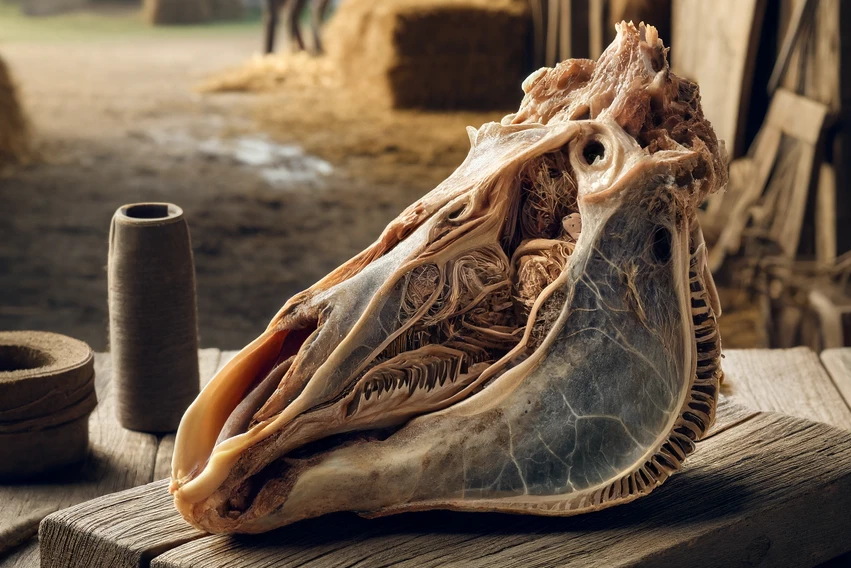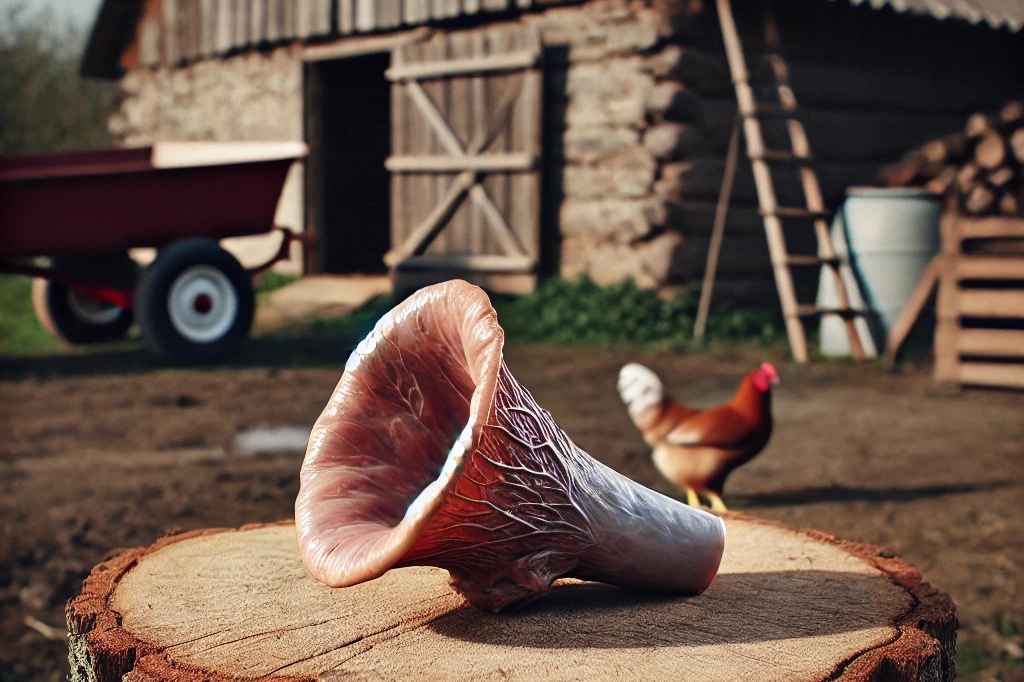Beef throats

Beef throats are a popular snack for dogs, made from the larynx and surrounding tissue of cattle. They are rich in protein, cartilage and collagen and can promote the health of your dog's joints, teeth and coat. But are beef larynxes safe for your four-legged friend? In this article, you'll find out more about the pros and cons of beef throats for dogs and what you should look out for when feeding them.
What are beef larynxes?
Bovine larynxes are a part of the offal of cattle that is not normally used for human consumption. They consist of the larynx, trachea, hyoid bone and the surrounding muscle and connective tissue. Beef larynxes are usually offered dried or frozen and can be fed whole or cut into pieces.
What are the benefits of beef larynx for dogs?
Beef throats have several benefits for dogs that make them a tasty and nutritious snack. Here are some of them:
- They are rich in protein, which is important for muscle building and recovery.
- They are high in cartilage and collagen, which can support joint, tendon and ligament health.
- They are high in calcium and phosphorus, which ensure strong bones and teeth.
- They are a natural source of glucosamine and chondroitin, which can reduce inflammation and prevent osteoarthritis.
- They clean the teeth of plaque and tartar and thus promote oral hygiene.
- They stimulate the urge to chew and ensure prolonged activity and stress relief.
- They have an intense smell and taste that appeals to many dogs.
What are the disadvantages of beef lumps for dogs?
Beef throats are not without risks for dogs. Here are some possible disadvantages of beef larynx for dogs:
- They can contain bacteria such as salmonella or E. coli, which can lead to diarrhea, vomiting or infection. Therefore, you should always ensure good hygiene and wash your hands after handling beef throats.
- They can be too big or too hard for small or older dogs. Therefore, you should always choose the right size for your dog and not leave him unattended when he is chewing beef throats.
- They can have splinters or sharp edges that can cause injury to the mouth or digestive tract. Therefore, you should always pay attention to the quality of the beef throats and dispose of them if they are damaged or spoiled.
- They can lead to an overdose of calcium or phosphorus if they are fed too frequently or in too large quantities. This can lead to an imbalance in the mineral balance and to health problems such as kidney stones or growth disorders. You should therefore always stick to the recommended amount for your dog and feed it a balanced diet.
How to feed beef throats correctly?
If you want to feed your dog beef throats, you should follow some tips to give him a safe and healthy experience. Here are some of them:
- Choose beef throats from a trusted source that guarantees high quality. Make sure they are fresh or well preserved and do not contain additives such as salt or preservatives.
- Store beef throats in a cool, dry place or in the freezer. Avoid leaving them in the sun or near heat sources. Use them within the best-before date or within three months of opening the packaging.
- Defrost beef throats slowly in the fridge or under running water. Do not put them in the microwave or in hot water, as this can change the structure and increase the risk of bacteria.
- Cut beef throats into suitable pieces for your dog. Make sure they are not too small to avoid choking, but also not too large to avoid choking. You can also cut off part of the larynx to make it softer.
- Feed beef larynxes as a treat or supplement to your dog's normal diet. Do not give him a beef larynx more than two to three times a week and reduce his main meal accordingly. Also consider your dog's weight and individual needs.
- Watch your dog as he chews beef throats and intervene if he has problems. Take it away if it becomes too small or if it shows signs of discomfort. Always offer him fresh water and check his mouth for injuries.
Beef throats can be a tasty and healthy snack for dogs, offering many health benefits. However, you should also be aware of the potential risks and take some precautions to ensure a safe and enjoyable experience for your dog.
If you notice any signs of hypersensitivity or poisoning in your dog, you should see your vet immediately. We are not a substitute for a vet, but we try to be as accurate as possible. Every dog reacts differently and we recommend you get a second opinion or consult your vet if in doubt.
Stay healthy and take good care of your four-legged friend!😊
Similar to Beef throats
Horse larynxes, also known as the horse's larynx, are parts of the respiratory system of horses. They are a by-product of horse meat processing and can be processed for dogs in a similar way to...
Goat larynxes are exactly what the name suggests: the larynxes of goats, which can be used as part of a raw meat diet or as a dried snack for dogs. They belong to the category of animal by-products...
Water buffalo larynxes are dried larynxes from water buffalo that are marketed as chews for dogs. They come from the same species of animals from which buffalo milk, meat and leather are obtained....
Pig larynxes, also known as the larynx, are parts of the pig's neck that remain after the animal has been slaughtered. They consist mainly of cartilage, a little meat and are rich in connective...


